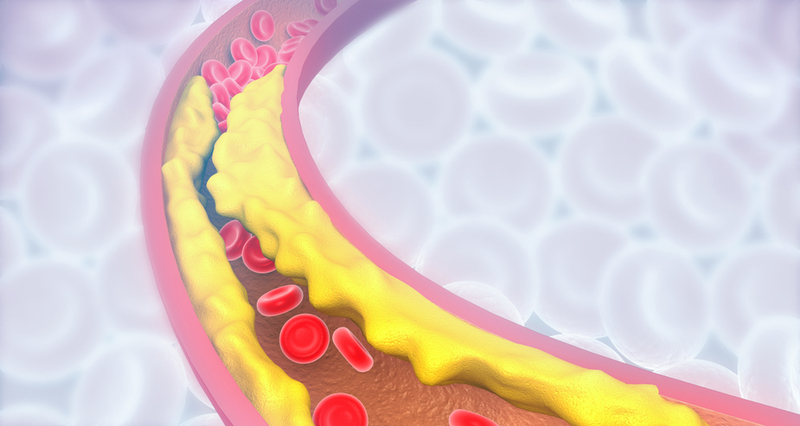Researchers uncover how bad cholesterol enters the walls of artery
ANI Apr 26, 2019
Researchers have unveiled how bad cholesterol enters the artery which leads to narrowing of the blood formation due to the formation of plaque. The narrow blood vessels cause heart attack and strokes, according to a study.

The study published in the journal Nature reveals for the first time how a protein called SR-B1 (short for scavenger receptor class B, type 1) ferries LDL particles into and then across the endothelial cells that line arteries. The study also found that a second protein called dedicator of cytokinesis 4, or DOCK4, partners with SR-B1 and is necessary for the process.
Since low-density lipoprotein, or LDL, cholesterol entry into the artery wall drives the development of atherosclerosis or hardening of the arteries, and atherosclerosis leads to heart attacks and strokes, future treatments preventing the process may help decrease the occurrence of these life-threatening conditions, said Dr. Philip Shaul, senior author of the study.
In the early stages of atherosclerosis, LDL that has entered the artery wall attracts and is engulfed by important immune system cells called macrophages that ingest, or "eat," LDL particles. LDL-laden macrophages become foam cells that promote inflammation and further the development of atherosclerotic plaques.
The plaques narrow the artery and can become unstable. Plaques that rupture can activate blood clotting and block blood flow to the brain or heart, resulting in a stroke or heart attack. In studies of mice with elevated cholesterol, the investigators determined that deleting SR-B1 from the endothelial cells lining blood vessels resulted in far less LDL entering the artery wall, fewer foam cells formed, and atherosclerotic plaques that were considerably smaller.
"At the start of this work it was surprisingly unknown how LDL enters the artery wall to cause cardiovascular disease," said Dr Shaul.
"The paper's findings solve that mystery and counter many scientists' prior assumption that LDL simply enters through sites of damage or disruption in the single layer of endothelial cells that serves as the artery wall's protective barrier," added Dr Shaul.
In their studies, the researchers compared SR-B1 and DOCK4 abundance in areas of the mouse aorta that are prone to plaque formation compared with regions less likely to become atherosclerotic. They found higher levels of SR-B1 and DOCK4 in the disease-prone regions long before atherosclerotic plaques form. This finding suggests that atherosclerotic lesions may be more common in particular artery sites because of more SR-B1 and DOCK4 present there, said Dr. Shaul.
To determine if these findings might apply to people, the researchers reviewed data on atherosclerotic and normal arteries from humans in three independent databases maintained by the National Institutes of Health (NIH). In all three databases, SR-B1 and DOCK4 were more abundant in atherosclerotic arteries compared with normal arteries.
The researchers are now exploring the possibility of using gene therapy to turn off or reduce the function of SR-B1 or DOCK4 in the endothelial cells that line arteries in order to prevent atherosclerosis, Dr. Shaul said.
"If you could develop a drug that inhibits SR-B1 or DOCK4 or a gene therapy that silences them in endothelial cells, you could potentially decrease atherosclerosis and, hence, reduce the incidence of coronary artery disease, heart attack, and stroke. Such strategies would complement current treatments that lower circulating LDL and be particularly valuable in situations in which LDL lowering is challenging," said Dr. Shaul.
-
Exclusive Write-ups & Webinars by KOLs
-
Daily Quiz by specialty
-
Paid Market Research Surveys
-
Case discussions, News & Journals' summaries
